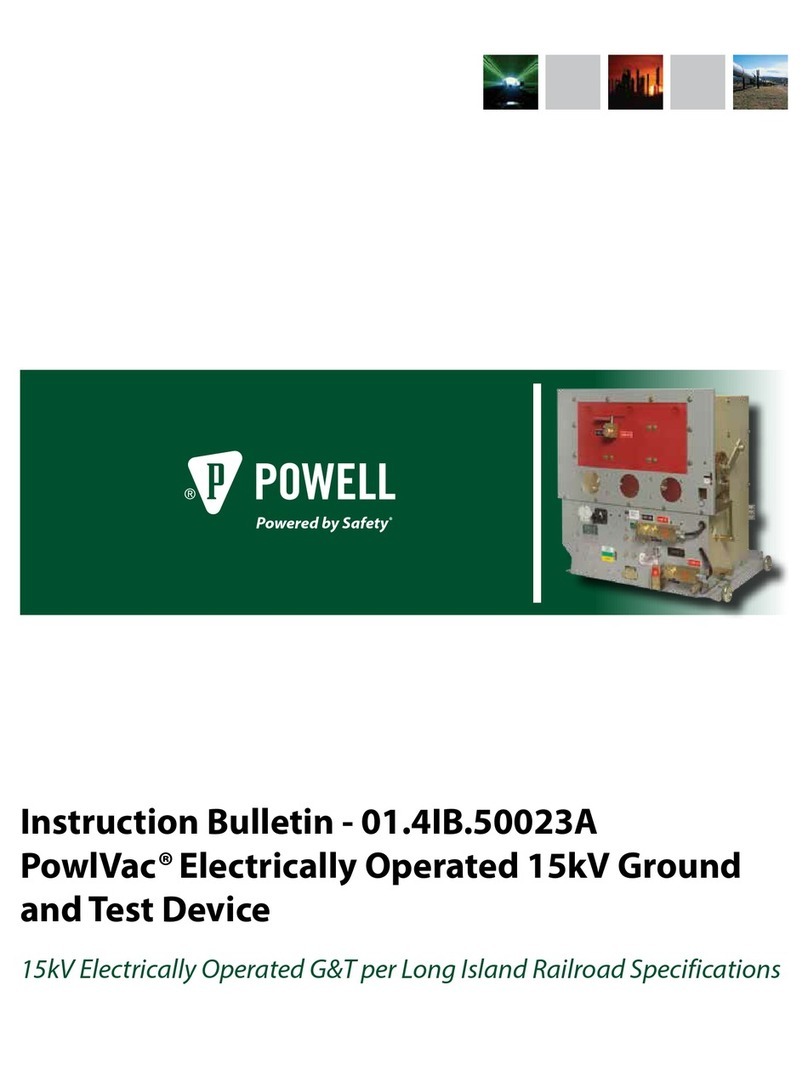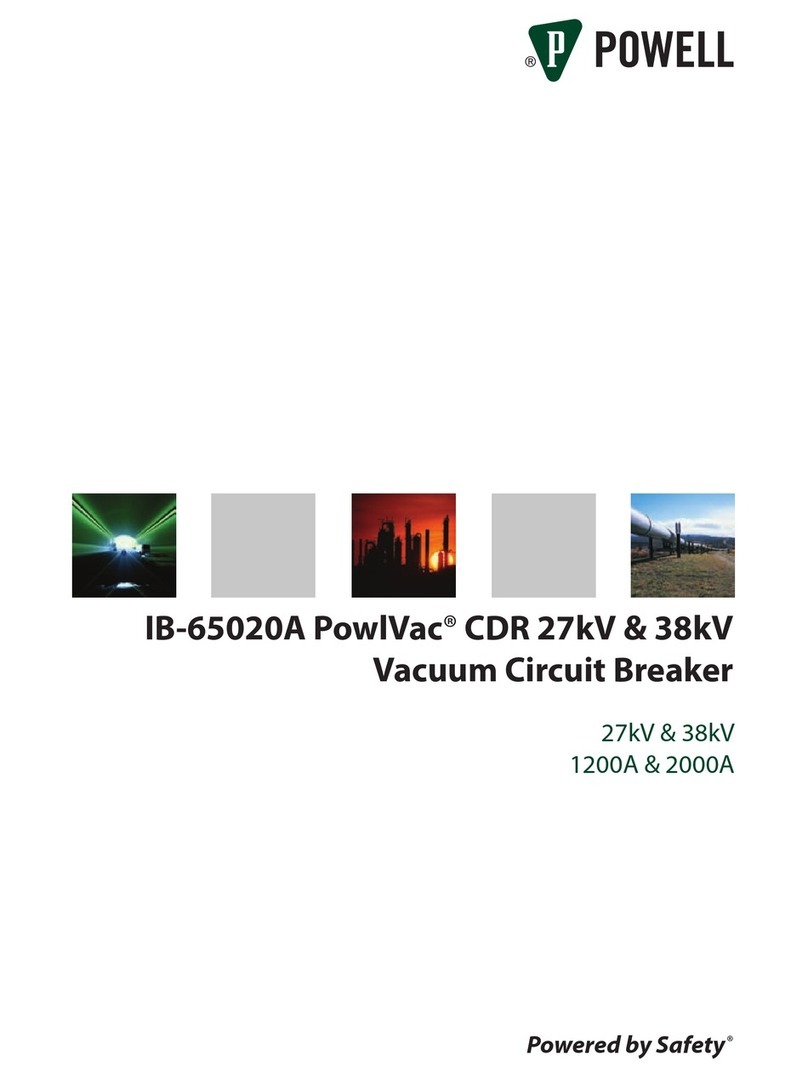
Powered by Safety®
ii
PowlVac® ASD 27kV & 38kV Vacuum Circuit Breaker
IB-65100
Contents
Ch 4 Installation..............................................................................................................23
A. RECEIVING ........................................................................................................................................................ 23
B. HANDLING........................................................................................................................................................ 23
C. STORAGE.......................................................................................................................................................... 23
D. PLACING THE CIRCUIT BREAKER INTO SERVICE............................................................................................................ 24
1) High-Voltage Insulation Integrity.......................................................................................................................................24
2) Vacuum Integrity....................................................................................................................................................................25
3) Control Voltage Insulation Integrity ..................................................................................................................................26
4) Mechanical Operation Check..............................................................................................................................................26
5) Electrical Operation Check...................................................................................................................................................27
E. INSERTING THE CIRCUIT BREAKER INTO THE SWITCHGEAR EQUIPMENT .............................................................................. 27
1) Inserting the Circuit Breaker to the Connected Position...............................................................................................27
2) Inserting the Circuit Breaker to the Test/Disconnect Position .....................................................................................29
F. REMOVING THE CIRCUIT BREAKER FROM THE SWITCHGEAR EQUIPMENT ............................................................................ 29
1) Removing the Circuit Breaker from the Connected to the Test/Disconnected Position........................................29
2) Removing the Circuit Breaker from the Test/Disconnect Position out of the Circuit Breaker Compartment...30
3) Removing the Circuit Breaker with Test Plug Interlock Engaged................................................................................30
Ch 5 Maintenance...........................................................................................................31
A. GENERAL DESCRIPTION ........................................................................................................................................ 31
1) Introduction.............................................................................................................................................................................31
2) Inspection and Cleaning ......................................................................................................................................................32
B. MECHANISM AREA ............................................................................................................................................. 33
1) Mechanical Operation ..........................................................................................................................................................33
2) Lubrication...............................................................................................................................................................................33
3) Closing Spring Removal........................................................................................................................................................37
4) Slow Closing of Mechanism.................................................................................................................................................38
5) Mechanism Adjustments......................................................................................................................................................38
6) Electrical Operation...............................................................................................................................................................44
C. VACUUM INTERRUPTER AND CONTACT AREA ............................................................................................................. 44
1) Vacuum Interrupter and Contact Erosion ........................................................................................................................44
2) Vacuum Integrity....................................................................................................................................................................45
3) Mechanical Adjustment of Vacuum Interrupters .................................................................................................................45
D. OPTIONAL MAINTENANCE PROCEDURES ................................................................................................................... 45
1) High Potential Tests ...............................................................................................................................................................45
2) Timing ......................................................................................................................................................................................46
3) Primary Resistance Check ....................................................................................................................................................46



































